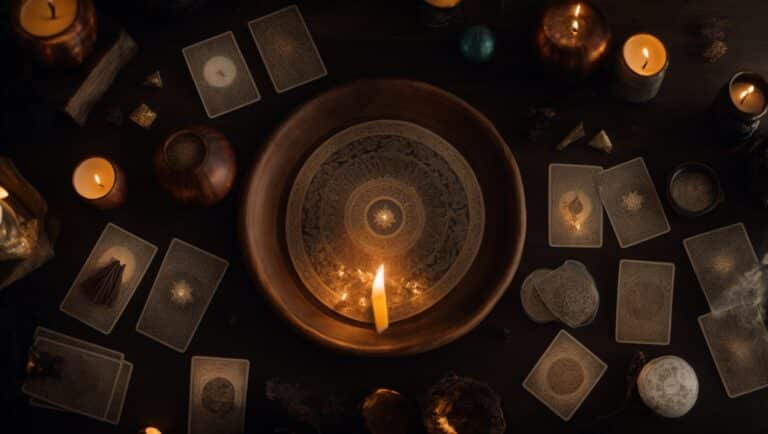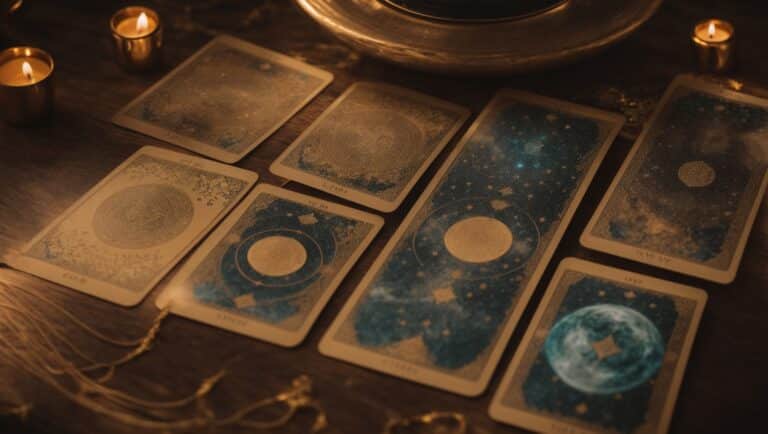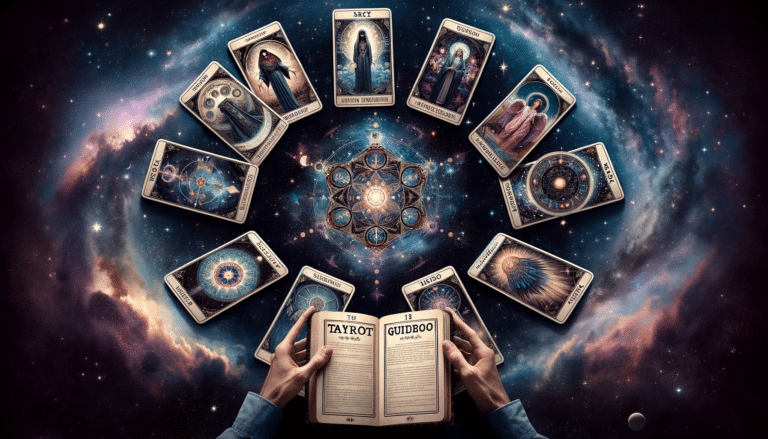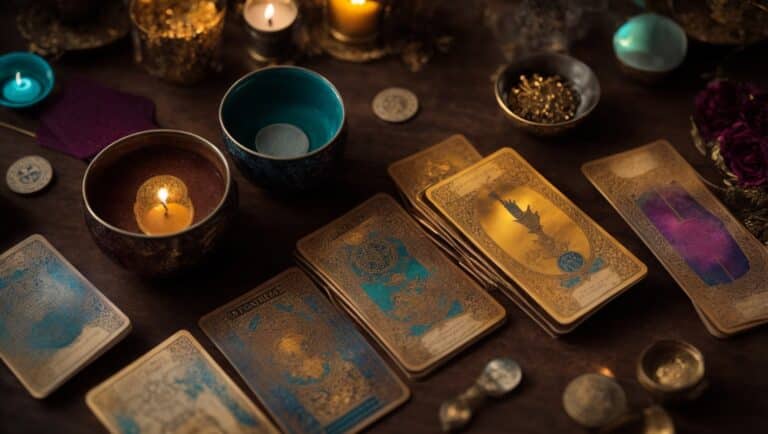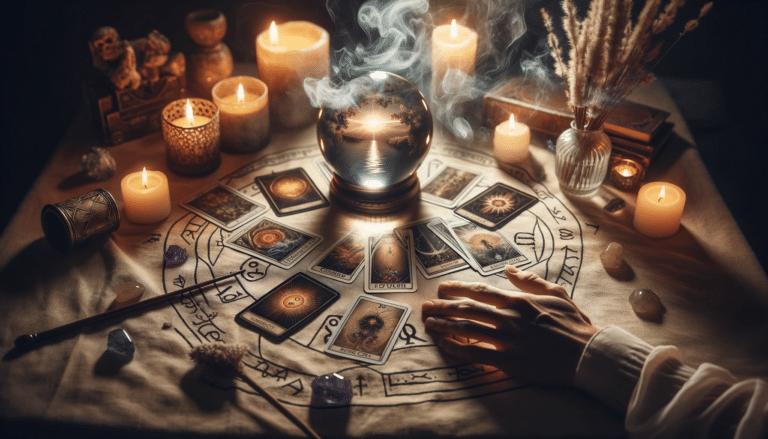How to Read Tarot Cards: Unlocking Mystical Secrets & Guidance
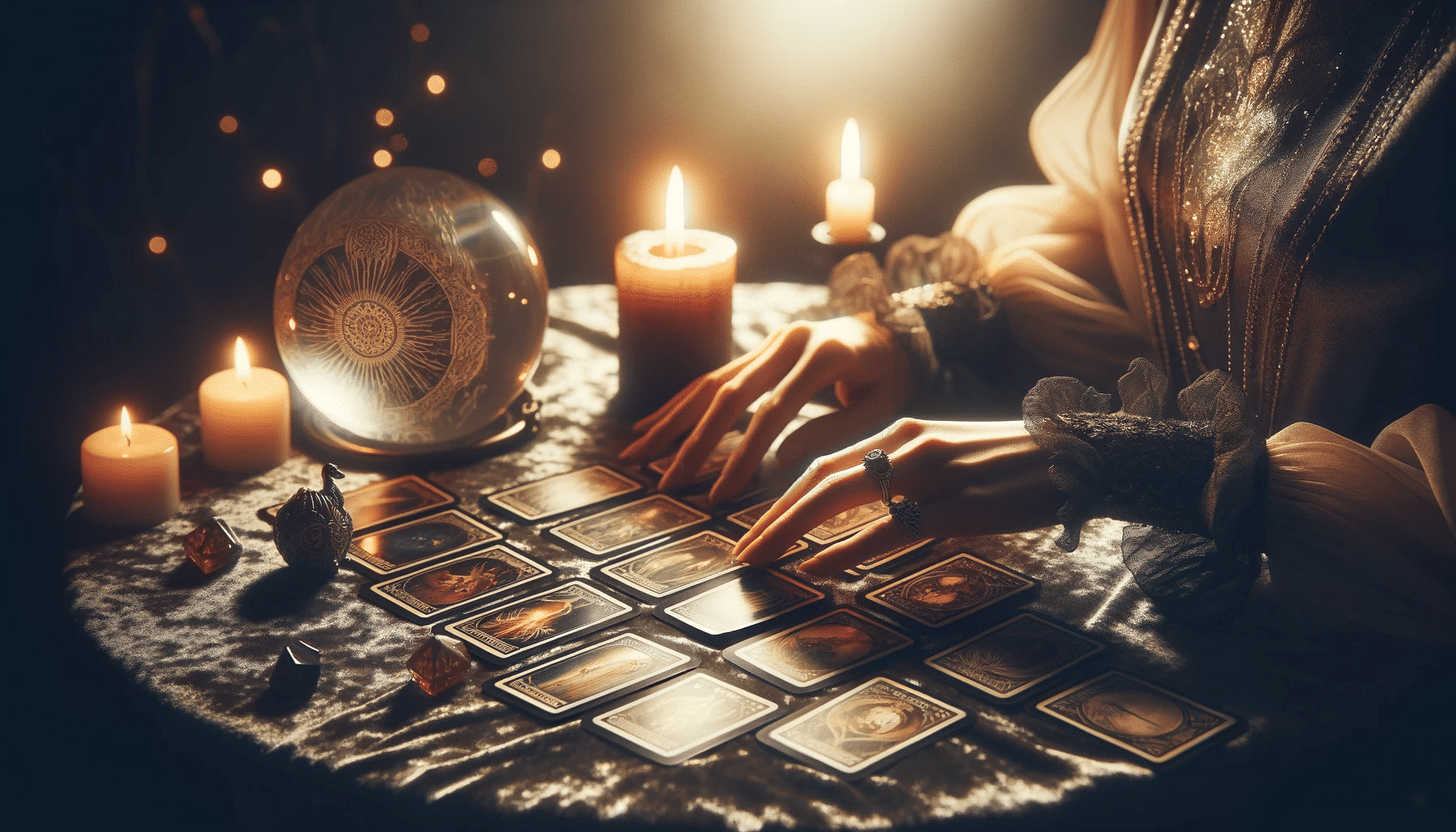
Dive into the world of tarot, where symbolism speaks volumes. You’ve picked up a deck, but what’s next?
Don’t let the intricate images overwhelm you. We’re here to guide you through the steps of how to read tarot cards.
You’ll learn how to familiarize yourself with your deck, select the right spread, and make meaningful connections between cards.
Ready to unlock the mysteries of your future? Let’s get started.
Key Takeaways
- Familiarize yourself with the structure of the Tarot deck, including the Major Arcana and Minor Arcana.
- Pay attention to the symbols on the cards, as they hold deep meanings and messages.
- Practice mindful shuffling and cutting of the deck to randomize the cards.
- Choose a Tarot card spread that resonates with your intuition and suits the question you are seeking answers to.
Understanding Tarot Card Basics
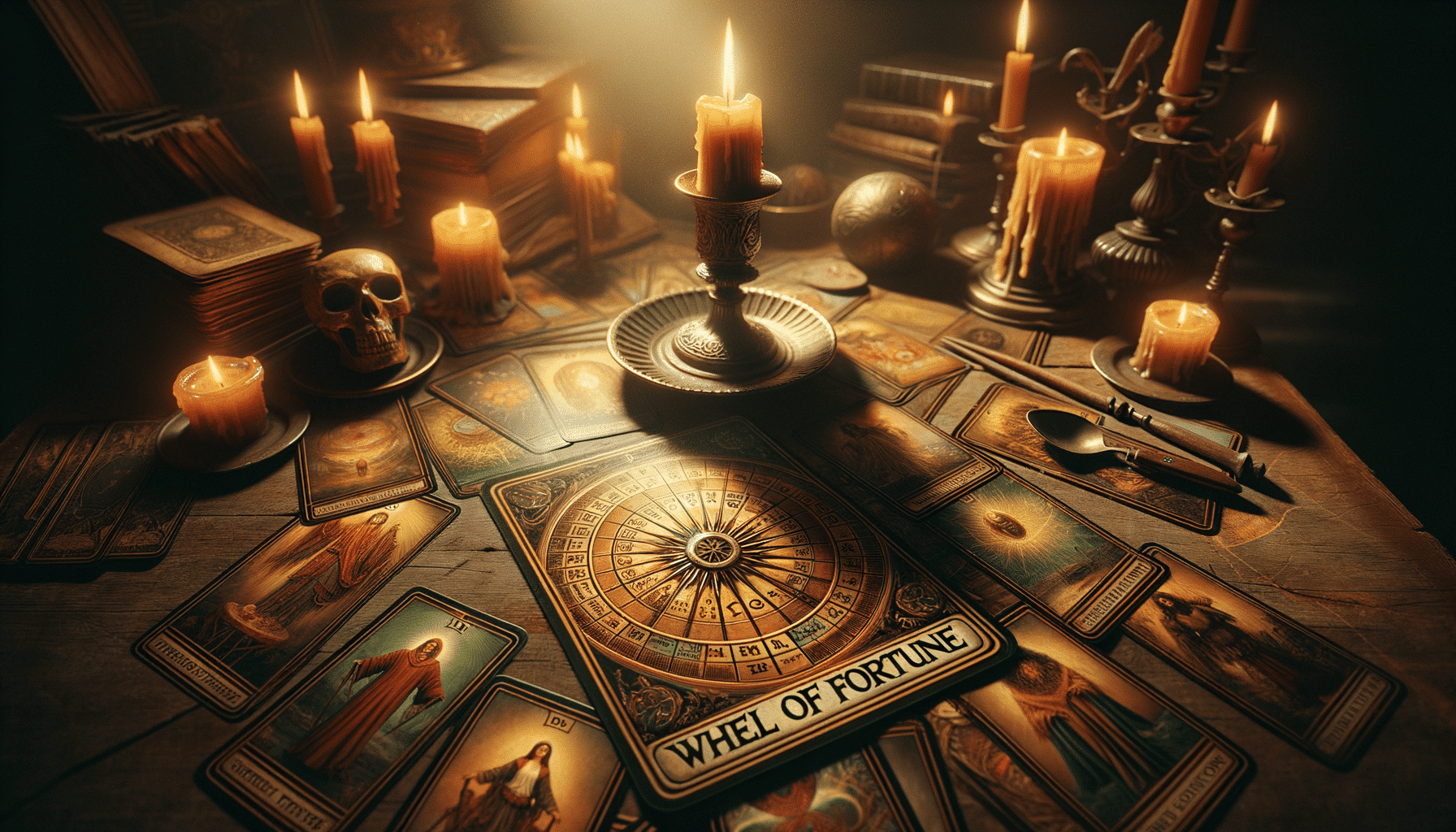
Before you dive into interpreting tarot cards, you’ll need to grasp the basic structure and symbolism inherent in a traditional 78-card deck. The deck is split into two sections: the Major Arcana and the Minor Arcana.
The Major Arcana, comprising 22 cards, represents life’s spiritual and karmic lessons. Their symbolism isn’t always direct, but they’ll start to make sense as you delve deeper.
On the other hand, the 56 cards of the Minor Arcana reflect trials and tribulations that we experience daily. These cards are divided further into four suits – Cups, Pentacles, Swords, and Wands, each representing a specific aspect of life. Cups, for instance, typically symbolize emotions and relationships.
It’s also important to understand that every card can have multiple meanings, influenced by the cards around it and the question you’re asking. For example, the Death card doesn’t necessarily mean physical death. It’s more often symbolic of transformation or change.
Check out our Tarot Cards & Oracle Decks here…
Familiarizing With Tarot Card Deck
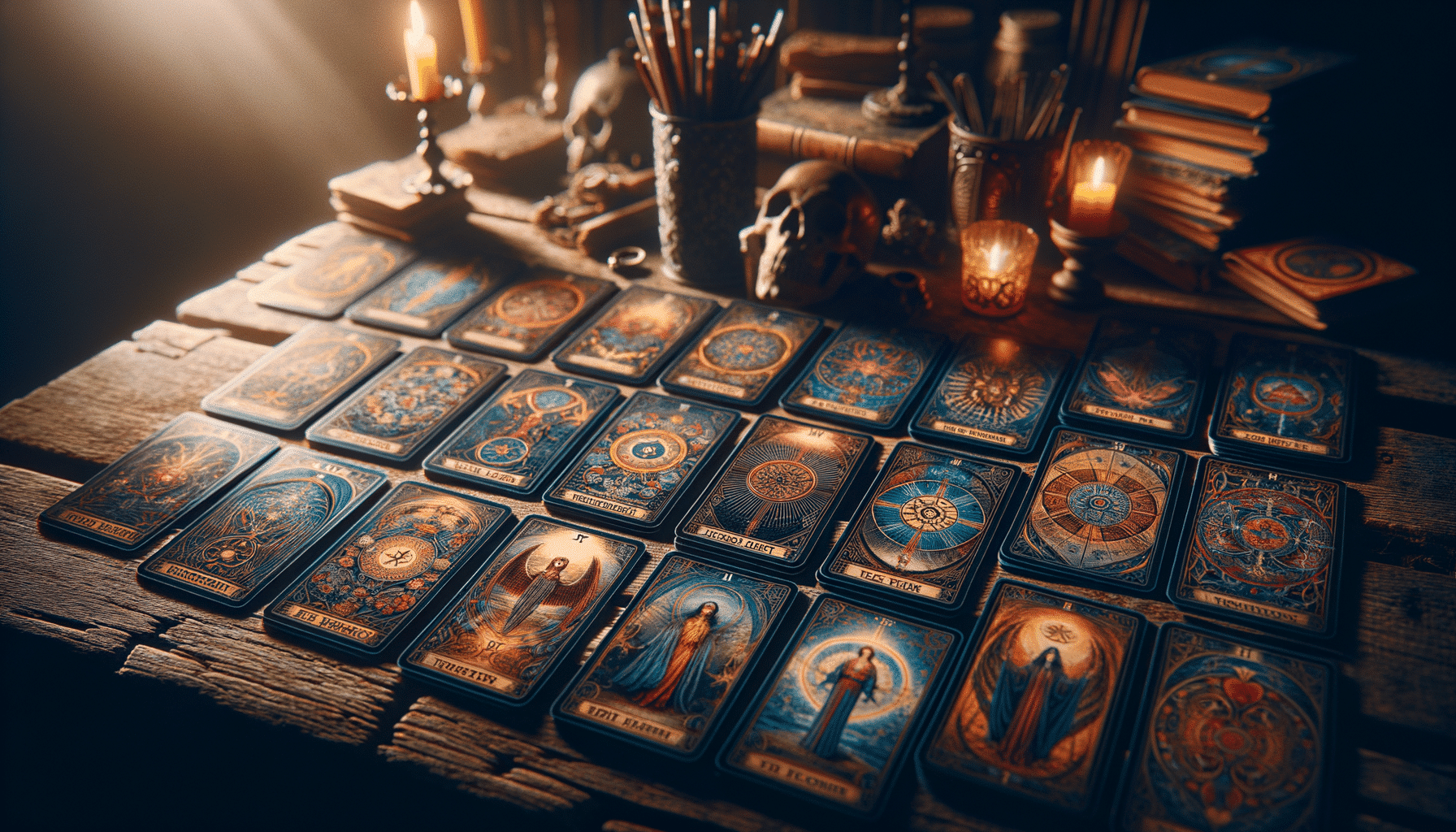
Before you can start interpreting tarot cards, you need to get to know your deck. Understanding the deck structure and recognizing card symbols are key to this process.
This will allow you to grasp the meanings and connections within the tarot deck more effectively.
Understanding Deck Structure
The first step in your tarot journey is understanding the deck’s structure, which will help you make sense of the cards’ meanings. A standard tarot deck comprises 78 cards divided into the Major and Minor Arcana.
The Major Arcana consists of 22 cards that symbolize life’s karmic and spiritual lessons. The Minor Arcana, on the other hand, contains 56 cards that reflect our day-to-day life. These are further divided into four suits: Cups, Pentacles, Swords, and Wands.
- Major Arcana: Represents life’s spiritual and karmic lessons
- Minor Arcana: Denotes daily life experiences
- Four Suits: Cups, Pentacles, Swords, and Wands
Getting familiar with these basics will set a solid foundation for your tarot learning. Next, let’s dive into recognizing card symbols.
Recognizing Card Symbols
Every single card in a tarot deck is rich with symbols, and it’s your task to learn to recognize and interpret them. These symbols aren’t just beautiful artwork; they hold deep meanings and messages.
A single card may contain symbols from nature, astrology, numerology, or mythology. For instance, a lion symbolizes strength and courage, whereas a rose can symbolize love or beauty.
Tarot is a visual language; you need to immerse yourself in it, study it, and let it speak to you. Start by observing each card, note the symbols you see, their colors, and their positioning.
There’s no shortcut. You’ll need patience and practice. But don’t worry, with time you’ll become fluent in this symbolic language, enhancing your tarot readings immensely.
Learn about more Basics of Tarot here…
Shuffling and Cutting the Deck
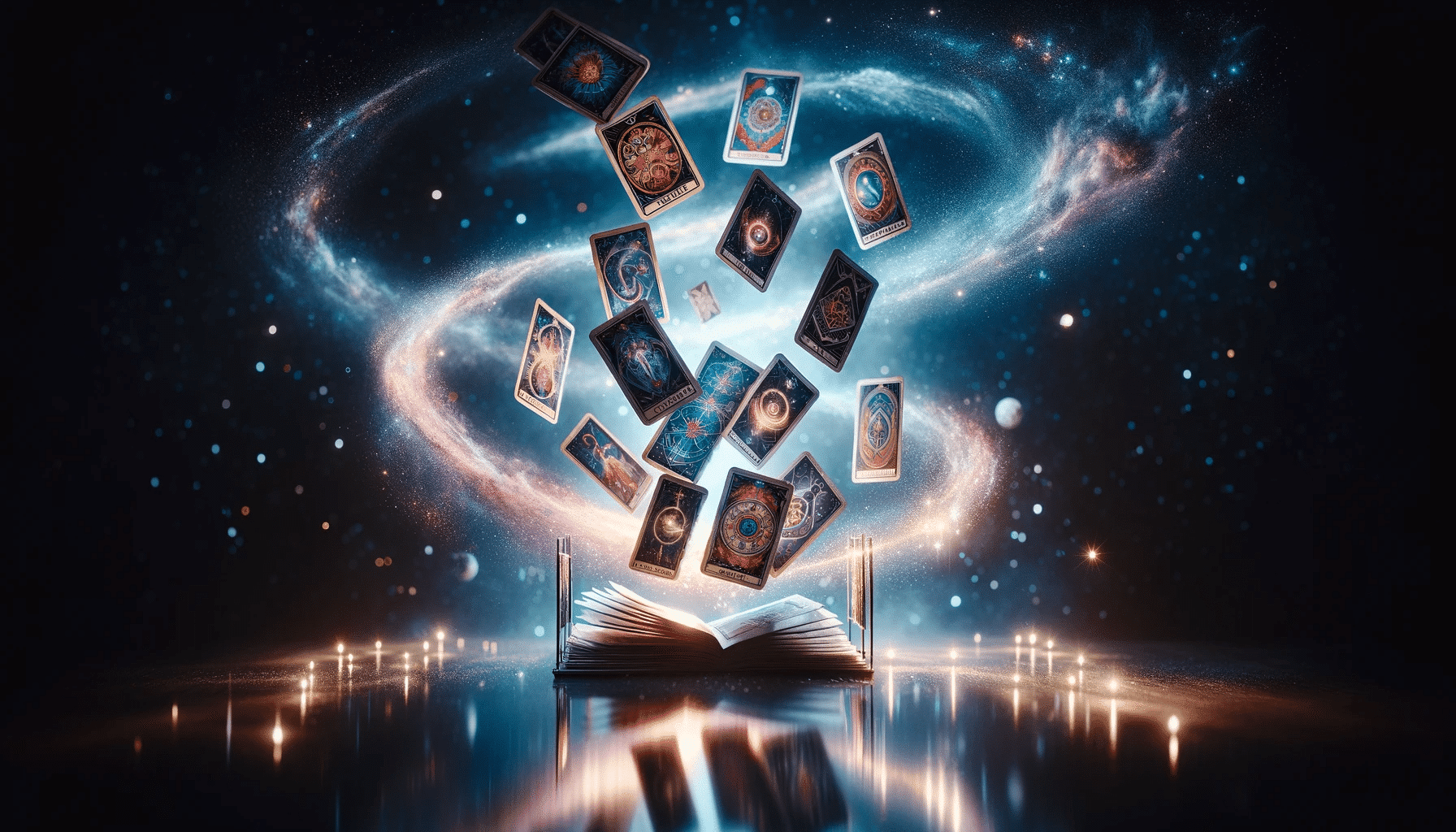
Start your tarot reading by thoroughly shuffling and then cutting the deck. This process isn’t only a practical way to randomize the cards, but it also serves as a meditative moment for you to focus your energy and intention.
Here are some tips to keep in mind:
-
Take your time. There’s no rush. Shuffling should be a mindful practice that helps you connect with the cards.
-
Don’t be too concerned about specific methods. Whether you choose to riffle shuffle or overhand shuffle, what matters most is that the cards are well mixed.
-
Cutting the deck. Once you feel the cards are shuffled enough, cut the deck. This can be into two or three piles, it’s entirely up to you.
Remember, each shuffle and cut you make infuses the deck with your energy and intention. This is how the cards become a mirror of your subconscious. As you handle them, imagine your question or the situation you want insight on.
Now that you’ve prepared your deck, we can move on to the next step: selecting a tarot card spread.
Learn even more secrets of Interpreting Tarot Cards here…
Selecting a Tarot Card Spread
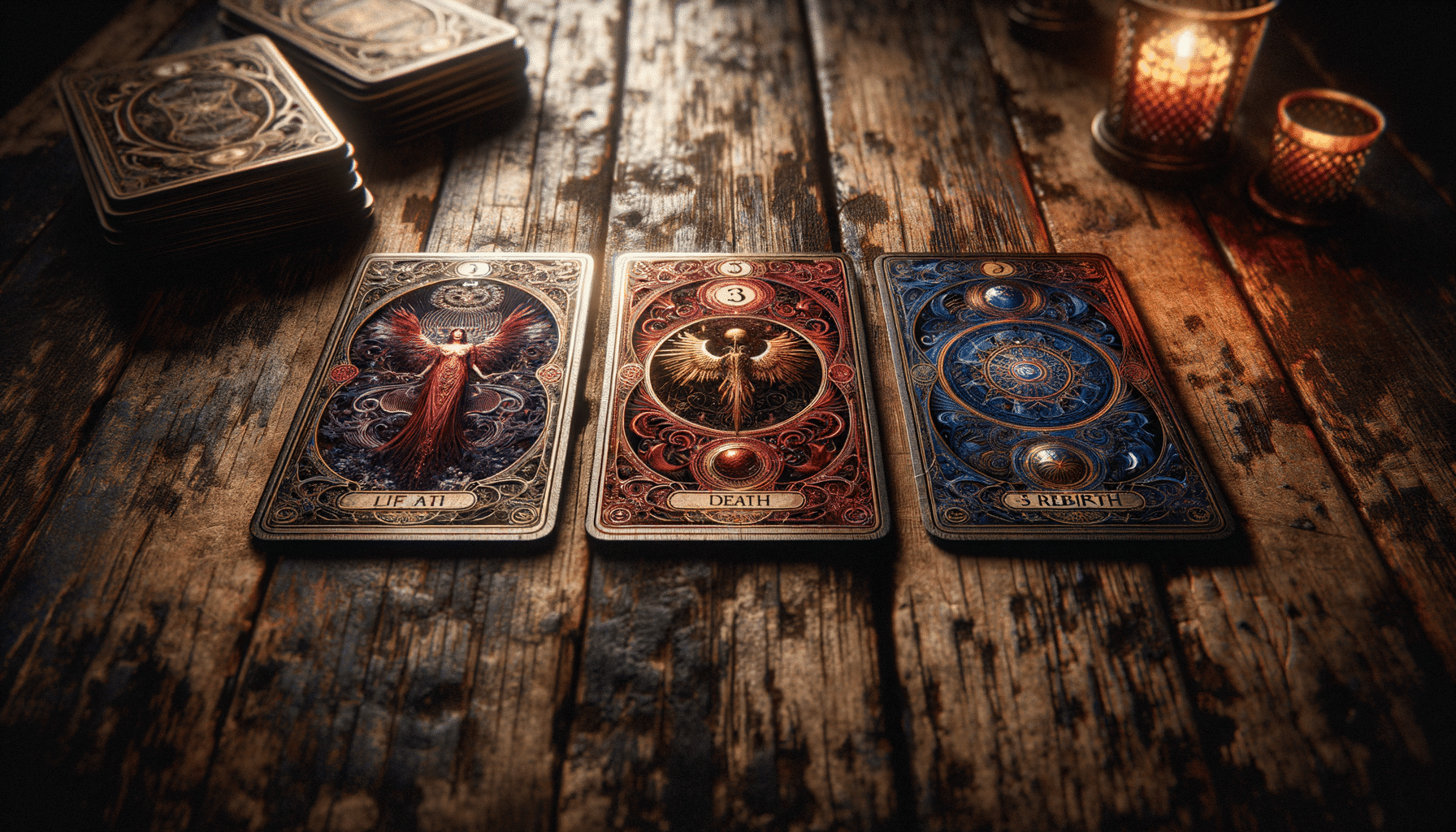
After you’ve infused your deck with your energy and intention, it’s time to pick a tarot card spread that suits your question or situation best. The spread refers to the layout of the cards, each position representing a different aspect of your query.
Different spreads offer unique perspectives. For simple, straight-to-the-point questions, a one-card pull may be enough. If you’re seeking insight into a more complex situation, a Celtic Cross spread, with ten cards, can provide in-depth analysis.
Here’s a brief overview of some common spreads:
| Spread | Cards | Situation |
|---|---|---|
| One Card | 1 | Quick insights or daily guidance |
| Three Card | 3 | Past, present, future or situation, action, outcome |
| Celtic Cross | 10 | Complex situations, multiple influences |
| Horseshoe | 7 | Detailed overview, options |
| Zodiac | 12 | Yearly forecast or life areas |
Selecting a spread isn’t just about complexity, but also resonance.
You might find certain spreads more intuitive or insightful for your needs. Experiment with different layouts until you find the ones that work best for you.
Remember, the goal is to enhance your understanding, not confuse you. Select a spread that resonates with your intuition and suits your question best.
Interpreting Individual Tarot Cards
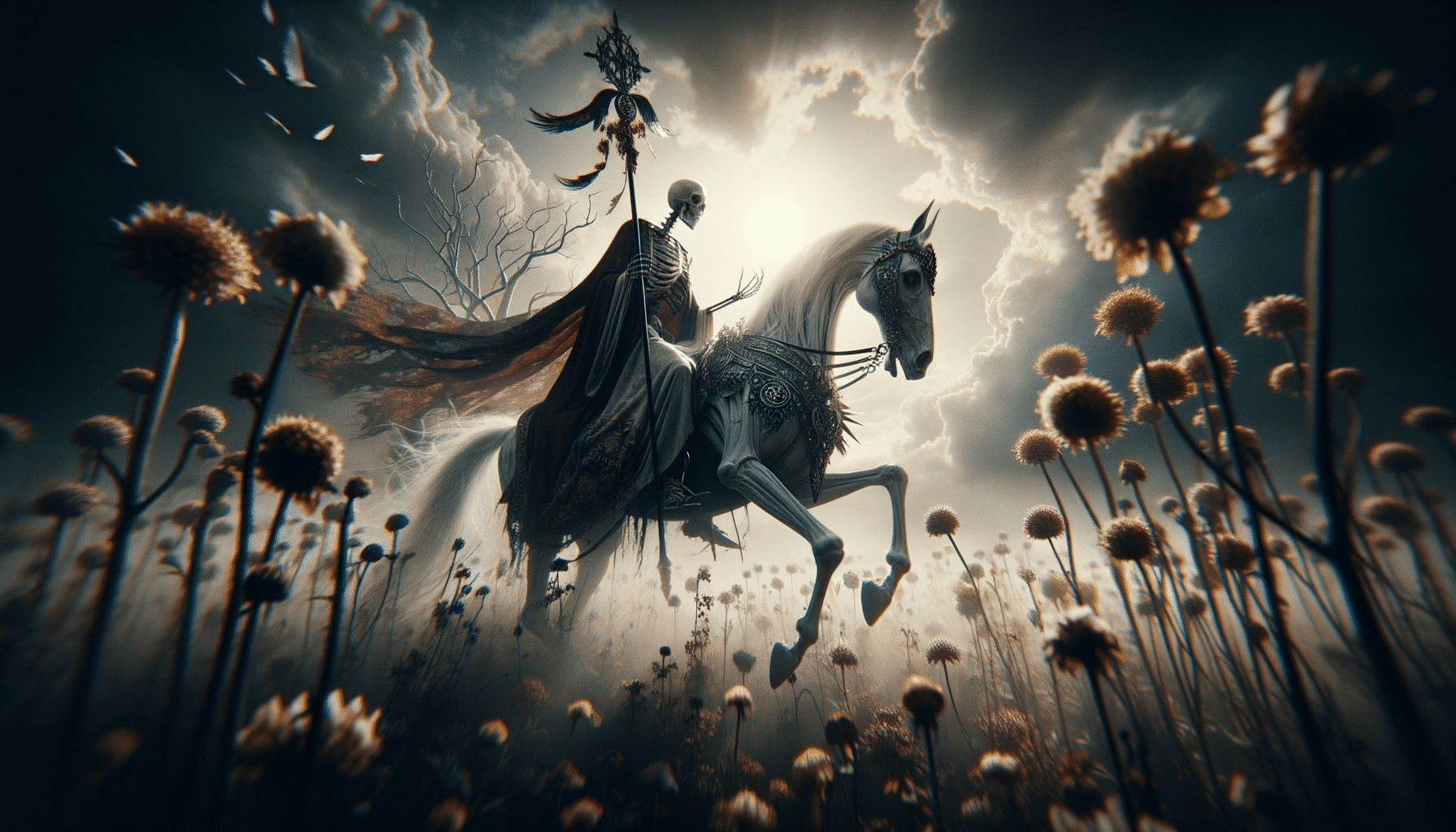
With your chosen spread in mind, you’re now ready to delve into the interpretation of individual tarot cards. Each card holds a wealth of symbolism and meaning, and it’s your job to unravel these mysteries.
Start by examining the card’s imagery. This isn’t just about pretty pictures. The symbolism on each card can give you unique insights into its meaning. For instance, a card depicting a turbulent sea might symbolize emotional upheaval.
Here are some key points to keep in mind:
-
Iconography: Every card is filled with symbols. An understanding of these can provide a deeper interpretation. Spend time learning common tarot symbols.
-
Card Position: Depending on your spread, where a card falls can change its meaning. A card in the past position has a different impact than if it’s in the future position.
-
Intuition: Trust your gut. Your initial feeling upon seeing a card can guide you to its meaning. Don’t discount your first impressions.
Making Connections Between Cards
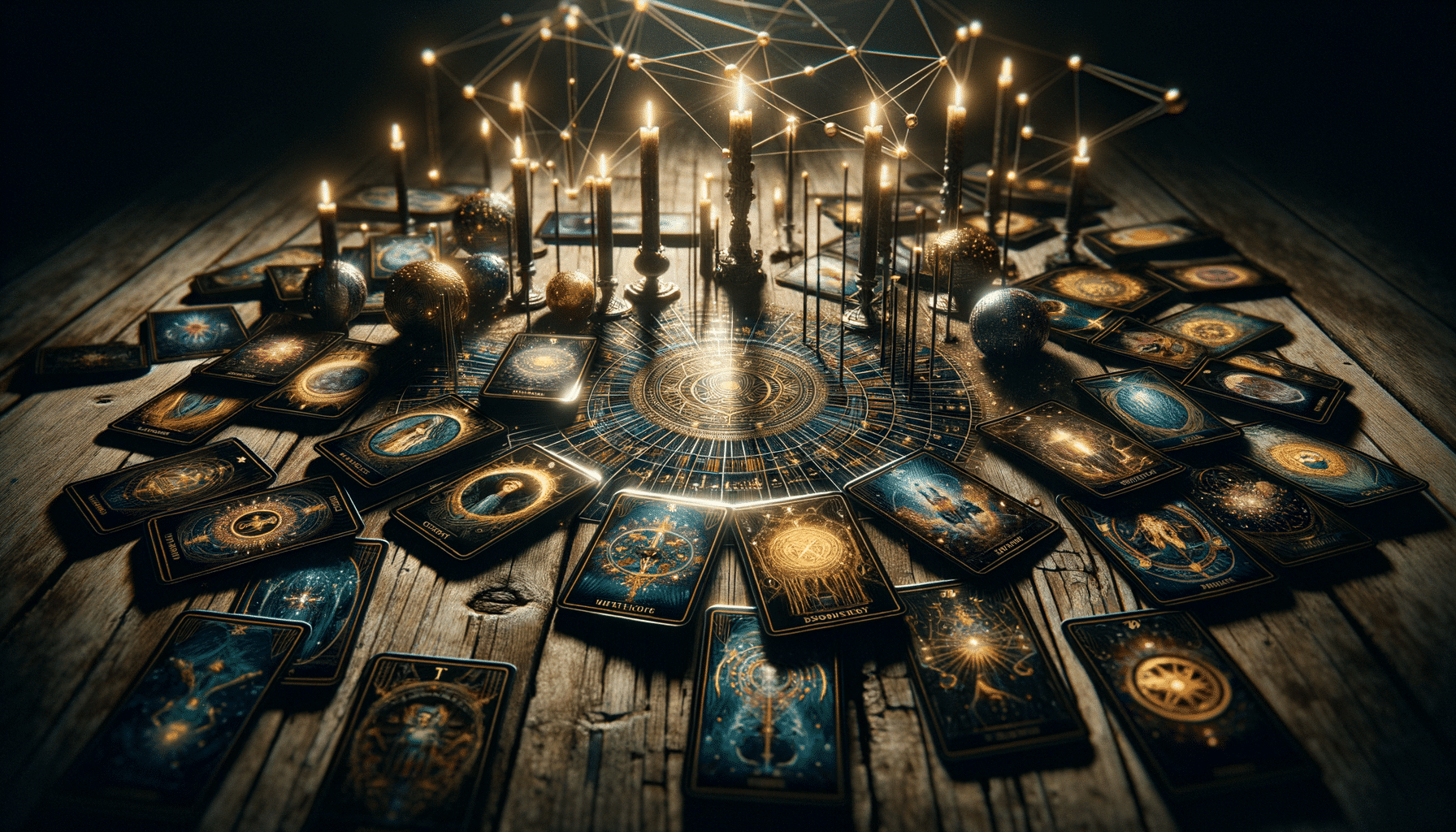
In your journey of tarot interpretation, you’ll find that understanding the relationships and patterns between cards in a spread is just as important as knowing their individual meanings. The way cards interact can add depth and nuance to your readings.
To help you visualize, imagine a spread where you have the ‘Death’ card followed by ‘The Sun’. Individually, ‘Death’ signifies endings and ‘The Sun’ represents positivity. Yet, together they could indicate the end of a tough period and the start of a happier phase.
Below is a table to help you visualize some common card connections:
| First Card | Second Card | Combined Interpretation |
|---|---|---|
| Death | The Sun | End of a tough period, start of a happier phase |
| The Lovers | The Tower | Relationship upheaval or challenges |
| The Empress | Two of Cups | Nurturing a relationship, potential partnership |
| The Fool | Ten of Pentacles | New beginnings, financial stability |
Practicing Tarot Card Readings
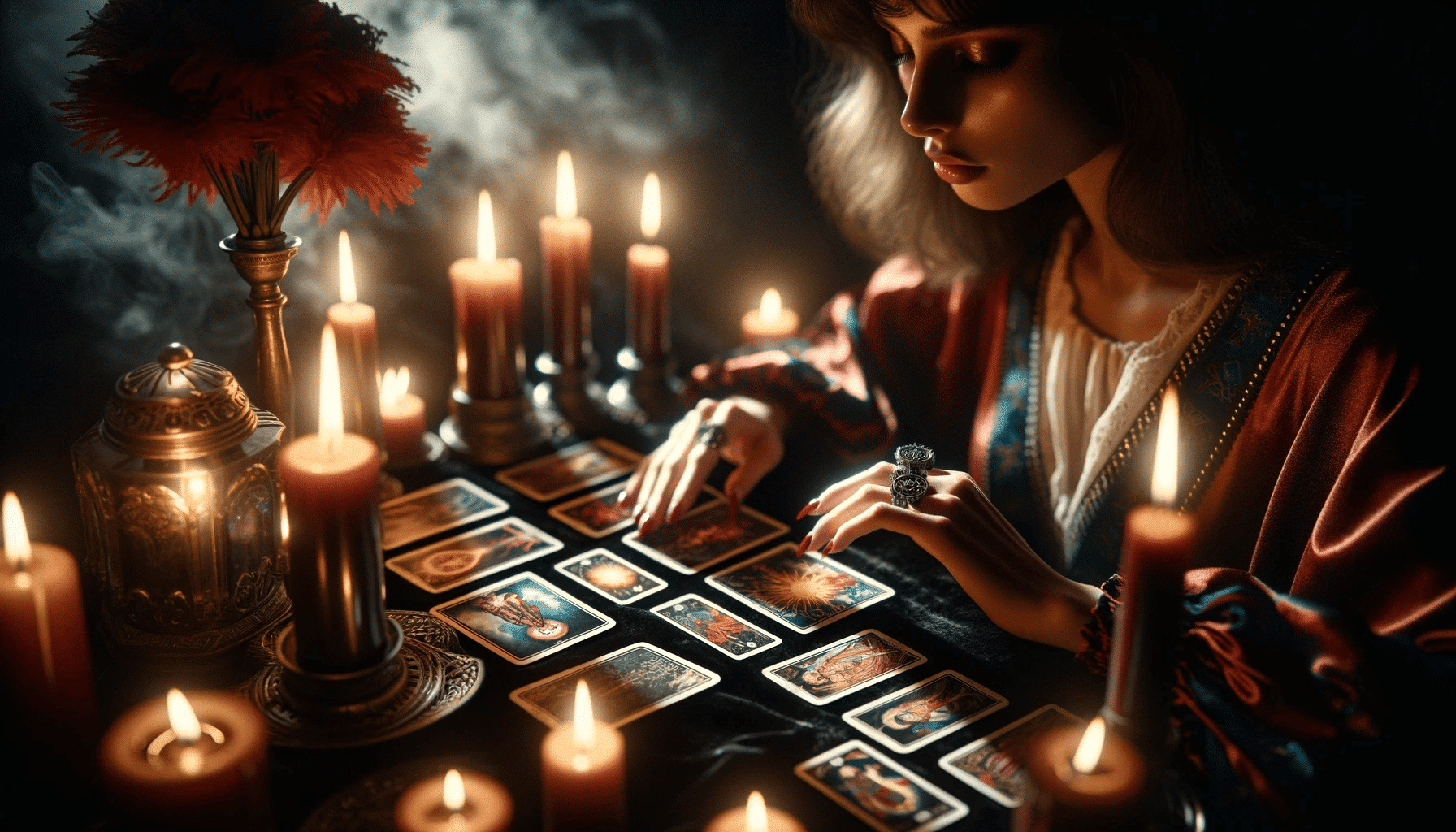
Now that you’ve got a handle on making connections between cards, it’s time to refine your skills through regular practice of tarot card readings. You might initially stumble, but don’t get disheartened. It’s essential to practice consistently. Tarot is a language you learn over time. You’ll slowly begin to see patterns and develop an intuitive sense of the cards’ meanings.
Here are some tips to help you in your practice:
- Start Small: Don’t rush. Start with one or two cards and gradually add more as you become comfortable.
- Practice Daily: Make it a habit. Even a small daily practice can lead to big improvements over time.
- Record Your Readings: Keep a tarot journal. It can help you track your progress, notice patterns, and deepen your understanding of the cards.
Frequently Asked Questions on How To Read Tarot Cards

What Is the History and Origin of Tarot Cards?”
Tarot cards originated in the mid-15th century in Europe, primarily Italy, as a playing card game. Over time, they’ve evolved into a tool for divination. You’re studying a tradition with deep historical roots.
Can Tarot Cards Predict the Future Accurately?”
While tarot cards can’t guarantee future events as clear as crystal, they’re insightful tools, guiding you to better understand potential outcomes based on your current path. Remember, you’ve the power to change your destiny.
Are There Any Risks or Dangers Associated With Tarot Card Readings?”
Yes, there’re risks with tarot readings. You could misinterpret cards, causing unnecessary worry. You might also become overly reliant on them, neglecting personal intuition. Always use tarot as a guide, not a definitive answer.
How To Read Reversed Tarot Cards in a Reading?”
Imagine you’re reading tarot and a card appears reversed. Don’t panic! It’s not necessarily negative. It simply suggests the energy of that card is internalized or delayed. It’s a call to introspect or patience.
Can Anyone Learn How to Read Tarot Cards or Do You Need Special Abilities?”
Absolutely, you can learn to read tarot cards. It doesn’t require special abilities. Just like any skill, it takes practice, study, and patience. Remember, tarot reading is about intuition and personal interpretation.
Conclusion
So, you’ve dabbled in the mystic art of tarot reading. You’ve familiarized yourself with the deck, shuffled and cut it, chosen your spread, and interpreted each card.
Now, it’s time to weave together the narrative they’re telling. Practice is key here, so don’t worry if it doesn’t make sense immediately. Remember, the cards don’t dictate your future, they simply provide guidance.
Find the coincidences, and you’ll find your path. Happy reading!
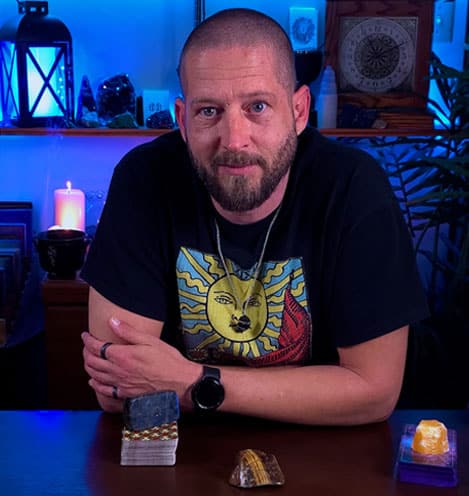
About The Author – Allen Hill
Allen Hill, the force behind Unknown Truth Tarot, has a YouTube following 6-times bigger than the population of his hometown, Miamisburg, Ohio. From his spiritually rich blog on Tarot and crystals to his role as CEO of The Unknown Truth Tarot Metaphysical Shop, Allen’s passion for the metaphysical shines through.
A master Tarot reader and “crystal junkie,” Allen is also a devoted dad to Dylan, 10, and Destiny, 24. When he’s not immersed in the world of Tarot and crystals, he enjoys poker and video gaming sessions, often humorously outplayed by Dylan.
Follow Allen on Twitter, Instagram, Facebook, TikTok, and subscribe to his Unknown Truth Tarot YouTube channel to join him on a journey of spiritual growth and self-discovery.

